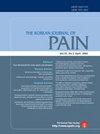慢性疼痛的抗菌治疗(第二部分):慢性疼痛的预防和治疗
IF 3.4
3区 医学
Q2 CLINICAL NEUROLOGY
引用次数: 0
摘要
抗菌疗法的发现和发展是现代医学最重要的进步之一。虽然抗菌剂的主要治疗目的是消除其目标病原体,但一些抗菌剂已被证明可以提供镇痛作为次要益处。抗微生物药物已被证明在涉及生态失调或潜在亚临床感染的情况下具有镇痛作用(例如,慢性腰痛伴Modic 1型变化;慢性前列腺炎/慢性盆腔疼痛;肠易激综合征;炎症性肠病;功能性胃肠疾病/消化不良;肌痛性脑脊髓炎/慢性疲劳综合征),甚至可能防止与过度全身性炎症相关的急性感染后疼痛的慢性化(例如,Covid -19后状态/长Covid,风湿热)。临床研究通常以观察的方式评估抗菌药物治疗的镇痛作用,没有能力确定因果关系,并且对抗菌药物的镇痛潜力的理解仍然存在重大差距。许多相互关联的患者特异性、抗菌素特异性和疾病特异性因素共同影响疼痛的感知和体验,每一个因素都需要进一步研究。鉴于世界范围内对抗菌素耐药性的关注,抗菌素必须继续审慎使用,不太可能被重新用作主要镇痛药物。然而,当几种抗菌药物治疗方案之间存在平衡时,某些抗菌药物的潜在镇痛益处可能是临床决策时考虑的一个有价值的方面。本文(两部分系列中的第二部分)旨在全面回顾使用抗菌药物预防和治疗慢性疼痛的证据,并为该主题的未来研究提出框架。本文章由计算机程序翻译,如有差异,请以英文原文为准。
Antimicrobial therapies for chronic pain (part 2): the prevention and treatment of chronic pain
The discovery and development of antimicrobial therapies represents one of the most significant advancements in modern medicine. Although the primary therapeutic intent of antimicrobials is to eliminate their target pathogens, several antimicrobials have been shown to provide analgesia as a secondary benefit. Antimicrobials have demonstrated analgesic effects in conditions that involve dysbiosis or potential subclinical infection (e.g., chronic low back pain with Modic type 1 changes; chronic prostatitis/chronic pelvic pain; irritable bowel syndrome; inflammatory bowel disease; functional gastrointestinal disorders/dyspepsia; myalgic encephalomyelitis/chronic fatigue syndrome), and might even prevent the chronification of pain after acute infections that are associated with excessive systemic inflammation (e.g., post COVID-19 condition/long Covid, rheumatic fever). Clinical studies often assess the analgesic effects of antimicrobial therapies in an observational manner, without the ability to identify causative relationships, and significant gaps in the understanding remain regarding the analgesic potential of antimicrobials. Numerous interrelated patient-specific, antimicrobial-specific, and disease-specific factors altogether contribute to the perception and experience of pain, and each of these requires further study. Given worldwide concerns regarding antimicrobial resistance, antimicrobials must continue to be used judiciously and are unlikely to be repurposed as primary analgesic medications. However, when equipoise exists among several antimicrobial treatment options, the potential analgesic benefits of certain antimicrobial agents might be a valuable aspect to consider in clinical decision-making. This article (the second in a two-part series) aims to comprehensively review the evidence on the prevention and treatment of chronic pain using antimicrobial therapies and suggest a framework for future studies on this topic.
求助全文
通过发布文献求助,成功后即可免费获取论文全文。
去求助
来源期刊

Korean Journal of Pain
Medicine-Anesthesiology and Pain Medicine
CiteScore
5.40
自引率
7.10%
发文量
57
审稿时长
16 weeks
期刊介绍:
Korean Journal of Pain (Korean J Pain, KJP) is the official journal of the Korean Pain Society, founded in 1986. It has been published since 1988. It publishes peer reviewed original articles related to all aspects of pain, including clinical and basic research, patient care, education, and health policy. It has been published quarterly in English since 2009 (on the first day of January, April, July, and October). In addition, it has also become the official journal of the International Spinal Pain Society since 2016. The mission of the Journal is to improve the care of patients in pain by providing a forum for clinical researchers, basic scientists, clinicians, and other health professionals. The circulation number per issue is 50.
 求助内容:
求助内容: 应助结果提醒方式:
应助结果提醒方式:


